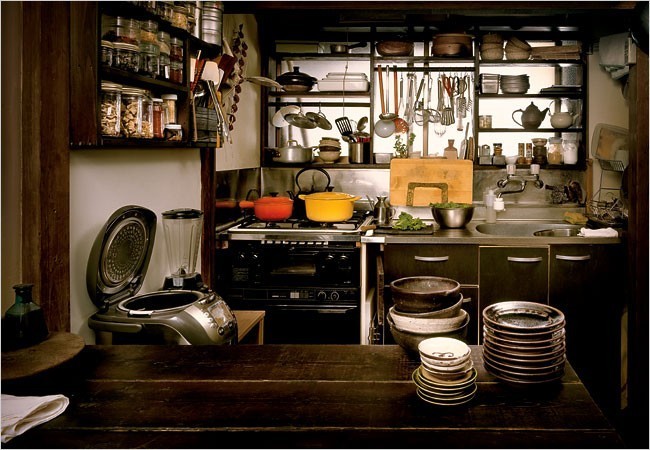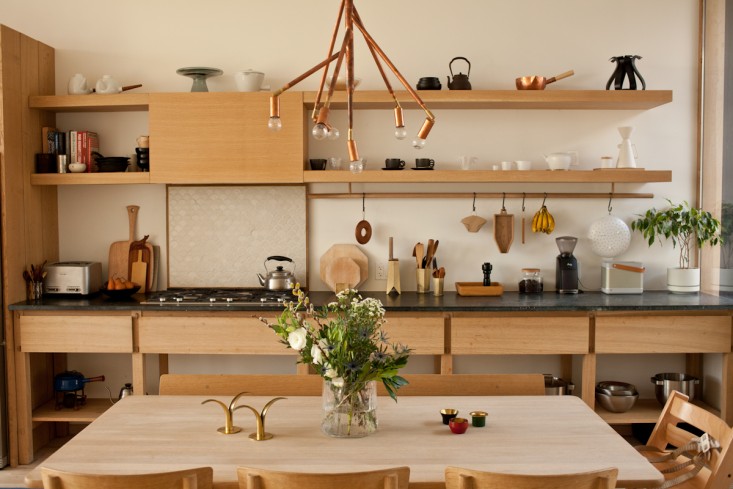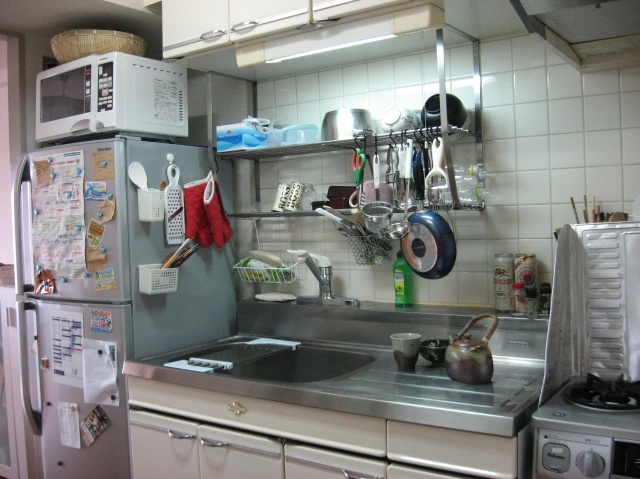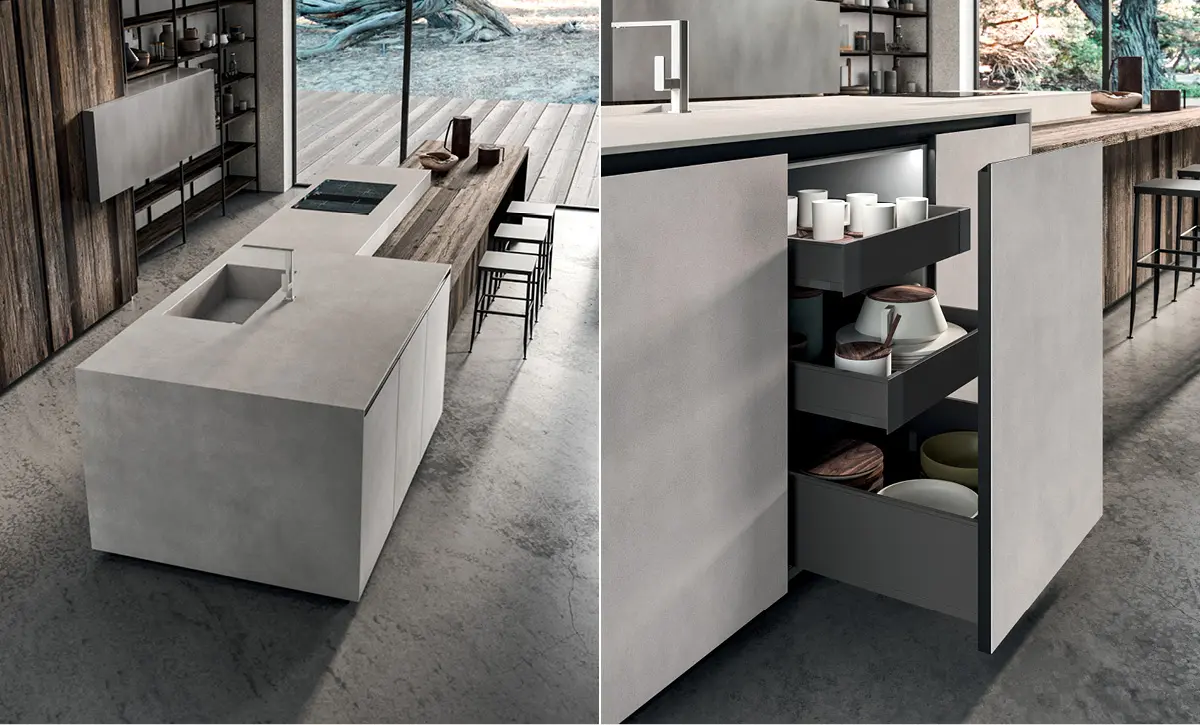Introduction: A Place Once Forgotten, Now Fully Awakened
Just a few years ago, the dining room was fading into the background—used occasionally, dressed up only on holidays, and sometimes converted into a home office or playroom. But now, in 2025, the dining room is staging a comeback—and not just as a space to eat. It’s becoming the beating heart of the modern home. It’s where meaningful conversations unfold, where aesthetic meets utility, and where family rhythm synchronizes with elegant design.
We live in a time where boundaries between rooms blur. The kitchen spills into the dining area; the dining space doubles as a coworking zone, and the design is no longer traditional—it’s intentional. This article will dive deep into how the dining room has transformed, what’s shaping its renaissance, and why it matters more than ever.
The Emotional Rebirth of the Dining Room
Why People Are Reclaiming the Dining Room in 2025
Post-pandemic, families around the globe are rediscovering the art of gathering. In 2025, the dining room isn’t just functional—it’s sacred. People are craving rituals, even in the mundane. Dinner is no longer just about food; it’s about reconnection.
The “third place” theory—which says humans need a home, a workplace, and a communal hangout—is finding a fourth space: the modern dining room. It’s where kids do homework, friends gather for game night, and couples share dreams over morning coffee.
According to a 2024 Houzz dining trend report, over 68% of homeowners redesigned their dining rooms to serve multiple purposes, including work, play, and meditation.
How Design Affects Emotional Bonding
The choice of lighting, texture, table size, and seating layout deeply affects how people interact. Round tables inspire conversation; bench seating encourages closeness; a statement light fixture becomes the anchor of evening discussions. Interior designers are seeing a surge in demand for warm, welcoming dining environments that tell stories—not just show style.
2025 Dining Room Trends That Define Functionality and Beauty
1. Flexible Furniture for a Fluid Lifestyle
Gone are the days of bulky sideboards and stiff chairs. The 2025 dining room thrives on adaptability:
-
Extendable tables for guests or game nights
-
Foldable wall-mounted buffets for compact homes
-
Stackable or hybrid chairs that shift between formal dining and casual lounge
“Furniture has to serve more than one purpose—it has to flow with your day,” says interior stylist Lena Arocho, in a 2025 feature by Elle Decor.
2. Natural Materials & Earth Tones Dominate
Design in 2025 is deeply influenced by biophilic principles—bringing the outdoors in. Expect to see:
-
Reclaimed wood dining tables
-
Linen and cotton tablecloths
-
Clay, terracotta, and rattan elements
-
Moss greens, sandy beiges, and muted rusts
These materials create a grounding effect, making dining experiences feel calm, mindful, and present.
3. Integrated Smart Technology
Dining rooms are getting smarter—but subtly. No clunky devices here, just smart integrations like:
-
Voice-controlled ambient lighting that shifts with time of day
-
Under-table heating systems for seasonal comfort
-
Invisible Bluetooth speakers built into cabinetry for low-key background music
-
Tables with built-in wireless charging spots
Tech blends into the room without becoming the focus—allowing atmosphere and human interaction to take center stage.

kitchen food tools accessories
The Dining Room as a Multipurpose Hub
Work, Create, Host, and Recharge—All in One Spot
Modern homes are often compact. And in this era of hybrid lifestyles, the dining room is a chameleon. It needs to adapt throughout the day:
-
8 AM – Home Office: Laptop out, coffee brewing, morning productivity starts at the head of the table.
-
12 PM – Kids’ Classroom: Arts, math, lunch, and chaos coexist.
-
6 PM – Dinner Party: Candles lit, food plated, the space transforms into a welcoming social cocoon.
This daily metamorphosis requires thoughtful planning in layout, lighting, and zoning. Interior architects now design dining rooms with:
-
Pull-down screens
-
Discreet storage for devices and school materials
-
Dual-lighting systems for day/night modes
Noise Management and Acoustics
As dining rooms become more multifunctional, acoustics matter more. Designers are using:
-
Upholstered walls or ceiling panels
-
Soft curtains or textile-based room dividers
-
Rugs under dining tables (often washable and stain-resistant)
All to create an acoustic comfort zone, especially when video calls happen at 11 and dinner conversations at 7.
Comparison Table: Traditional vs. Modern Dining Room (2025)
| Feature | Traditional Dining Room | Modern Dining Room (2025) |
|---|---|---|
| Function | Meals only | Multi-purpose: eat, work, gather |
| Furniture | Heavy, formal | Light, modular, adaptable |
| Materials | Dark woods, polished metals | Natural wood, linen, terracotta |
| Lighting | One overhead chandelier | Smart, layered, mood-adjustable |
| Technology | None | Discreet smart integration |
| Layout | Isolated room | Open-concept or transitional |
| Emotional Impact | Formality, rigidity | Comfort, connection, creativity |
Design Strategies to Make Your Dining Room the Heart of Your Home
Zone It, Don’t Clone It
Instead of copying Pinterest-perfect designs, define zones within your dining room:
-
A conversation nook near the window
-
A hidden storage wall behind the buffet
-
A mobile workspace setup you can stow away
Choose the Right Table
Size matters—but so does shape. Here’s a quick breakdown:
| Table Shape | Best For | Energy/Flow |
|---|---|---|
| Round | Conversation, small spaces | Intimate, inclusive |
| Rectangular | Large families, hosting | Structured, classic |
| Oval | Style + function balance | Fluid yet organized |
| Square | Compact rooms, even groups | Modern, cozy |
Invest in Mood Lighting
A single fixture won’t do anymore. You need layers:
-
A dimmable pendant or chandelier for overhead
-
Wall sconces for evening ambiance
-
A nearby floor lamp for work hours
-
Smart bulbs to automate brightness levels
Lighting tells your brain what time of day it is—and what the room should feel like.

rouhi-persian-cuisine
Backlink Suggestions (Authoritative Sources)
Here are external, reputable sources that back up trends and techniques mentioned:
-
Houzz 2024 Dining Room Trends – For insights on multifunctional spaces
-
Architectural Digest: Dining Room Design Ideas – For designer tips on materials and layouts
-
Better Homes & Gardens: Smart Home Integration – For ideas on smart tech in home interiors
-
Forbes: The Rise of Biophilic Design – For earthy design movements
What’s Coming in Part 2?
In Part 2, we’ll explore:
-
Color psychology and texture layering for memorable dining atmospheres
-
Storage and display solutions for art, dishes, and daily tools
-
The psychological effects of sitting vs. standing dining trends
-
Expert interviews and case studies from real homes in 2025
-
Deeper analysis on dining room sustainability, minimalism, and personalization
Designing for Emotion, Function & Personal Identity
Color Psychology and Texture Layering in 2025 Dining Rooms
Why Color Choice Impacts Daily Experience
Color isn’t just visual—it’s emotional. It subtly shapes how people behave, communicate, and feel in a space. In dining rooms, where family dynamics, digestion, and mood intertwine, color choice can make or break the vibe.
Here’s how color psychology plays into 2025’s most beloved dining room palettes:
| Color | Emotional Impact | Best Used For |
|---|---|---|
| Earthy Terracotta | Warmth, groundedness | Walls, chair cushions |
| Sage Green | Calm, balance | Accent wall, table runner |
| Navy Blue | Depth, conversation starter | Feature wall, lighting shades |
| Golden Ochre | Energy, appetite | Artwork, curtains |
| Matte Black | Sophistication, contrast | Table base, cabinetry |
Interior psychologist Dr. Marla Connors explains in her 2025 study:
“Color saturation and contrast levels in dining spaces directly influence conversation depth and eating pace. Soft, earthy hues encourage intimacy; bright ones stimulate alertness.”
Texture Is the New Luxury
Forget sterile minimalism. The 2025 dining room is a tactile heaven:
-
Rough-hewn wooden tables contrast with buttery soft velvet chairs
-
Rattan pendant lamps float above stoneware plates
-
Walls may be finished with limewash, and tabletops adorned with chunky woven runners
Texture invites people to linger, touch, and feel more grounded—perfect for transforming meals into experiences.

colbeh-persian-kitchen _ iranian food
Hidden Storage Meets Artful Display
Function Is Beautiful Now
One of the most transformative shifts in dining room design is that storage is no longer hidden—it’s curated. The modern dining room celebrates the things you own, not just where you hide them.
Key trends include:
-
Floating shelves with curated dishware and vases
-
Built-in buffets that double as statement pieces
-
Tall corner cabinets with LED-lit glass doors to display heirloom ceramics
-
Rolling carts that serve drinks at dinner and act as mobile storage by day
In 2025, it’s not about hiding clutter—it’s about elevating daily objects to the level of art.
Seating Dynamics: The Psychology of Where We Sit
How the Table Shapes Behavior
Your dining table’s shape and seating arrangement can either spark conversation—or shut it down. According to behavioral space experts, the geometry of connection plays a vital role.
| Seating Layout | Impact on Social Dynamics |
|---|---|
| Round Table, Equal Chairs | Inclusive, equal conversation flow |
| Rectangular Table, One Long Side Occupied | Informal, great for group tasks |
| U-Shape Seating | Encourages eye contact and intimacy |
| Mixed Chairs and Bench | Signals a relaxed, family-style feel |
| Heads of Table Reserved | Hierarchical, ideal for structured dinners |
In a study by the Home Behavioral Lab (2024), families with round or oval tables reported 27% more daily family interaction than those with traditional rectangular tables.
Personalization: Telling Your Story Through Design
No Two Dining Rooms Should Look the Same in 2025
Designers are rejecting cookie-cutter catalog looks. Today’s homeowner wants a dining room that reflects their roots, values, and personal rhythm.
Ideas to add personal soul:
-
Gallery walls with family travel photos and handwritten recipes
-
Locally sourced or inherited furniture mixed with modern accents
-
Handmade ceramics or art displayed as centerpieces
-
Custom lighting pendants that reflect heritage (e.g., Moroccan lanterns, Japanese paper orbs)
Your dining room should tell the story of who you are—not just who you follow on Instagram.

japanese-woman-cooking-at-home-2GEB1XT
Minimalism vs. Maximalism: What’s Winning in 2025?
Balanced Maximalism Is the New Norm
2025 is the year of the curated maximalist. Not chaotic clutter, but meaningful abundance. This means:
-
Fewer but richer textures
-
More layers, not more stuff
-
A mix of old and new, bold and soft
Minimalism still has its place, but cold, white-walled rooms are being replaced by inviting, layered, emotionally charged environments.
According to Pinterest’s 2025 interior trend report, searches for “warm maximalist dining room” are up +410% year over year.
Case Study: The Rise of the Multi-Generational Dining Room
Meet the Hernandez Family from Austin, TX
A three-generation household—grandparents, parents, and children—live under one roof and use their dining room as a daily gathering anchor.
Their space includes:
-
A custom 10-foot oval table made from reclaimed Texas oak
-
A magnetic whiteboard wall for kids and seniors to leave notes or sketches
-
A rotating centerpiece with plants, puzzles, and family games
-
Dual lighting zones—brighter for daytime activities, warm and low for dinners
“We eat, argue, plan, and celebrate in here,” says Isabela Hernandez. “It’s not just where we dine—it’s where we live.”
This is exactly what the modern dining room of 2025 is meant to be: alive, flexible, full of heart.
Dining Room Mistakes to Avoid in 2025
-
Over-saturating the space with trends
→ Always filter trends through your real lifestyle. -
Using overhead lighting only
→ Incorporate layered lighting: pendant + wall + task lighting. -
Too much symmetry
→ Balanced asymmetry feels more human, more lived-in. -
Ignoring acoustics
→ Add soft surfaces: curtains, rugs, and upholstered chairs. -
No flexible storage
→ Mobile, dual-purpose pieces make the room more adaptive.

various kitchen utensils on wooden table, top view
Backlink Suggestions (Reputable 2024–2025 Sources)
-
Pinterest Predicts 2025 – Great data on maximalism, color trends
-
Elle Decor: Texture in Interior Design – On why tactile design is rising
-
The Spruce: Best Dining Room Lighting Tips – Functional lighting strategies
-
Dwell: Emotional Design in Furniture – How design affects emotion and connection
What’s Coming in Part 3?
In Part 3, my style sovereign, we’ll cover:
-
Sustainability and eco-conscious dining room choices
-
Cultural influences shaping global dining room aesthetics
-
A full FAQ section with real homeowner questions
-
Final summary, and a link to a curated YouTube inspiration video
Sustainability and Eco-Conscious Dining Rooms
Why Sustainability in Dining Room Design Matters More Than Ever
In 2025, sustainability is no longer just a buzzword—it is a lifestyle imperative shaping every corner of our homes. The dining room, as the heart of connection and nourishment, reflects our commitment to the planet and future generations.
Choosing eco-conscious materials and practices means you’re not only creating a beautiful space but also reducing environmental impact. It’s about making every meal a statement of care—toward people, nature, and tomorrow.
Eco-Friendly Materials: Style Meets Responsibility
-
Reclaimed Wood: Tables and chairs crafted from reclaimed oak, walnut, or maple bring warmth and history, reducing the demand for virgin timber. The natural imperfections add unique character to your dining space.
-
Bamboo: Fast-growing and highly renewable, bamboo is ideal for flooring, chair legs, or even paneling. Its strength rivals traditional hardwoods while being lighter on the planet.
-
Organic Textiles: Cotton, linen, or hemp seat cushions, curtains, and runners—grown without harmful pesticides and dyed with natural pigments—create breathable, comfortable textures.
-
Low VOC Paints and Finishes: Using paints and finishes low in volatile organic compounds ensures better indoor air quality, contributing to your family’s health.
-
Natural Stone & Clay: For flooring, backsplashes, or decorative accents, natural stone and clay provide durability and a timeless aesthetic with minimal environmental impact.

Smart Kitchen Technology: Revolutionizing Cooking and Convenience in 2025
Energy-Efficient Lighting & Appliances
Lighting is both functional and atmospheric in the dining room. In 2025, smart, energy-efficient solutions dominate:
-
LED Bulbs: These consume up to 85% less energy than incandescent bulbs and last 25 times longer.
-
Smart Lighting Systems: Integrated apps let you adjust brightness, warmth, and color remotely, syncing lighting with your meal’s mood while conserving energy.
-
Solar-Powered Pendant Lamps: Where natural light is insufficient, solar-powered or rechargeable lamps add sustainable ambiance.
-
Energy Star Certified Appliances: If your dining room includes a beverage fridge or warming drawer, choosing Energy Star certified models ensures low energy consumption.
Zero Waste Decorating and Maintenance
Creating a zero waste dining room is an art in itself:
-
Minimal Packaging: Choose furniture and decor from brands committed to reduced or recyclable packaging.
-
Upcycling: Transform vintage pieces with fresh paint or new upholstery rather than buying new. A weathered cabinet can become a stunning buffet.
-
Composting: Set up an attractive compost bin in or near the dining room to recycle food scraps effortlessly.
-
Reusable Tableware: Opt for ceramic or glass dishes over disposable or plastic alternatives.
Upcycling & Vintage Revival Trends
2025 celebrates the charm of past eras with a sustainable twist:
-
Mixing mid-century modern chairs with industrial metal tables
-
Repurposing old doors as dining table tops
-
Vintage chandeliers updated with LED bulbs
This approach honors history and reduces waste, all while creating eclectic, one-of-a-kind spaces full of soul.
How to Create a Dining Room That Honors Nature and Future Generations
-
Use plants to purify air and soften hard edges—think potted ferns or trailing ivy.
-
Install natural ventilation through operable windows or vents to reduce reliance on HVAC systems.
-
Choose durable, timeless pieces over fast-furniture that will wear quickly and be discarded.
-
Engage in mindful consumption: only buy what you truly love and need.

50 Kitchen Tools and Equipment and Their Uses
Cultural Influences and Global Inspirations
How Dining Room Design Reflects Cultural Identity Worldwide
Dining rooms have always been mirrors of cultural heritage and identity. In 2025, as global connectivity deepens, we witness an inspiring fusion of styles, traditions, and philosophies enriching the way we design and experience these spaces.
Whether it’s the communal warmth of Mediterranean gatherings or the serene minimalism of Japanese dining rituals, your dining room can be a canvas that tells your story—and the world’s.
Fusion Styles: East Meets West, Rustic Meets Modern
-
Japandi: This blend of Japanese minimalism and Scandinavian functionality champions clean lines, natural materials, and muted colors. It creates a calming dining space that feels both warm and uncluttered.
-
Boho-Mediterranean: Combining colorful tiles, rustic wood, and airy fabrics, this style is perfect for those who love vibrancy mixed with earthiness.
-
Industrial Meets Traditional: Exposed metal and brickwork paired with handcrafted wooden furniture pay homage to urban living while maintaining homely comfort.
Spotlight on Global Dining Room Aesthetics
Japanese Influence
-
Low-profile furniture (tatami mats, floor cushions)
-
Sliding shoji screens for flexible spaces
-
Emphasis on natural light and simplicity
Scandinavian Influence
-
Light woods like pine and birch
-
Functional and minimalistic furniture
-
Use of whites and muted tones to brighten space
Mediterranean Influence
-
Mosaic or terracotta tile accents
-
Warm earth tones and textured walls
-
Large tables designed for communal meals
Latin American Influence
-
Vibrant colors and handwoven textiles
-
Ornate wooden furniture with intricate carvings
-
Use of ceramics and folk art as decor

Dining Room Design Essentials: Style, Function & Comfort
Using Global Patterns, Furniture, and Rituals to Enrich Your Space
Incorporating elements from diverse cultures can transform your dining room into a celebration of world heritage:
-
Use Moroccan rugs or Turkish kilims under the table to add pattern and warmth.
-
Hang artisanal baskets or textiles from Guatemala or Peru on the walls for texture and color.
-
Add ritual-inspired pieces like Indian brass lamps or African wood carvings as statement decor.
These choices create layers of meaning and invite guests to share in a multicultural dining experience.
Celebrating Cultural Diversity Through Food and Design
Your dining room is more than furniture—it’s where stories and traditions unfold over meals. In 2025:
-
Hosting themed dinners inspired by global cuisines brings families closer and educates children on diversity.
-
Rituals like Moroccan tea ceremonies or Italian antipasto platters inspire table settings and atmosphere.
-
Sharing international recipes links your dining space to the world beyond your walls.
Backlink Suggestions (Latest Trusted Sources 2024–2025):
-
Dezeen: Global Interior Design Trends 2025 – Emerging cross-cultural design trends
-
National Geographic: Cultural Traditions Around the Dinner Table – Insight into dining rituals worldwide
-
Architectural Digest: Scandinavian Interiors – Deep dive into Nordic design
-
The Spruce: Mediterranean Decorating Ideas – Tips on Mediterranean style interiors
-
Green Building Advisor: Sustainable Interior Design – Expert insights on eco-friendly materials
-
Energy Star: Lighting Tips – Guide on energy-efficient lighting
-
Zero Waste Home: Decorating Ideas – Practical tips for waste reduction at home
-
Architectural Digest: Vintage Revival Trends 2025 – Style inspiration with sustainability in mind

Kitchen & Dining
Ultimate Guide to Kitchen Tools and Gadgets for 2025
Practical Advice, FAQs, and Inspirational Resources
Practical Advice for the Perfect Dining Room in 2025
Lighting: Setting the Mood and Saving Energy
-
Combine layered lighting: ambient ceiling lights, focused pendant lamps over the table, and soft wall sconces for warmth.
-
Use dimmers and smart controls to adjust lighting for meals, gatherings, or quiet moments.
-
Maximize natural light during the day with sheer curtains or adjustable blinds.
Cleaning and Maintenance Tips
-
Choose furniture with durable, easy-to-clean finishes like sealed wood or laminate.
-
Use natural cleaning products to protect surfaces and air quality.
-
Regularly rotate rugs and cushions to avoid wear spots and fading.
Furniture Care
-
For wood pieces, apply natural oils or waxes periodically to maintain luster and prevent drying.
-
Upholstery can be refreshed with gentle steam cleaning or professional services.
-
Tighten screws and bolts seasonally to keep chairs and tables sturdy.
Decorating Hacks
-
Use seasonal centerpieces—fresh flowers in spring, dried botanicals in autumn—to keep the space vibrant.
-
Layer rugs to add texture and define zones, especially in open-plan layouts.
-
Incorporate mirrors to visually expand the room and reflect light.
Integrating Technology Smoothly
-
Hide charging stations and outlets with stylish cabinetry or under-table organizers.
-
Use wireless speakers for background music that complements dining experiences.
-
Install smart thermostats nearby to keep temperature comfortable without distractions.
Frequently Asked Questions (FAQ)
Q1: What size dining table is ideal for a family of four?
A1: A table roughly 48 inches long and 30 inches wide provides enough elbow room and comfort. Consider extendable tables if you entertain guests often.
Q2: How can I make a small dining room feel larger?
A2: Use light colors, mirrors, and multi-functional furniture like benches with storage. Keep décor minimal to avoid clutter.
Q3: What are the best materials for easy-to-clean dining chairs?
A3: Leather or faux leather, tightly woven fabrics, and treated wood are excellent choices for durability and ease of maintenance.
Q4: How to balance style and function in dining room storage?
A4: Opt for buffet tables or cabinets that complement your décor style but also offer practical compartments for dishes, linens, and tableware.
Q5: Can dining rooms be pet-friendly?
A5: Absolutely! Use stain-resistant fabrics, washable rugs, and keep pet bowls and toys organized in dedicated zones.

Innovative Kitchen Accessories You Can’t Live Without
Summary: Bringing It All Together
In 2025, the dining room is no longer just a place to eat—it’s a soulful extension of your lifestyle, values, and connections. By blending sustainability, cultural richness, emotional design, and practical wisdom, you create a space that feeds body, mind, and heart.
Every element—from eco-friendly materials and global inspirations to smart lighting and thoughtful maintenance—works in harmony to elevate your daily experience.
Curated Inspirational Resources for Your Dining Room Journey
Must-Watch YouTube Playlist:
“Dining Room Transformations & Design Ideas 2025”
Top Blogs & Magazines
-
Architectural Digest — Expert insights on modern and classic dining interiors
-
The Spruce — Practical how-tos and style guides
-
Apartment Therapy — Small space and budget-friendly dining ideas
-
Green Building Advisor — Sustainability-focused interior tips
Trusted Product Recommendations
-
West Elm — Sustainable furniture collections
-
IKEA — Affordable, functional designs with eco-conscious options
-
CB2 — Contemporary and eclectic dining pieces
Table 1: Eco-Friendly Dining Room Materials — Benefits & Considerations
| Material | Environmental Impact | Durability | Aesthetic Style | Maintenance Tips |
|---|---|---|---|---|
| Reclaimed Wood | Reduces deforestation; reuses old timber | High | Rustic, unique character | Clean with dry cloth; occasional oiling |
| Bamboo | Rapidly renewable, low water use | Medium-High | Modern, light, natural | Avoid prolonged water exposure; wipe clean |
| Organic Cotton & Linen | Grown without pesticides, biodegradable | Medium | Soft, breathable textiles | Wash with mild detergents; air dry |
| Low VOC Paints | Low emissions, healthier indoor air | N/A | Variety of finishes | Use non-toxic cleaners |
| Natural Stone & Clay | Long-lasting, minimal processing | Very High | Earthy, timeless | Seal periodically to prevent staining |
Table 2: Popular Dining Room Styles — Key Features & Ideal For
| Style | Key Features | Color Palette | Ideal For | Cultural Origin |
|---|---|---|---|---|
| Japandi | Minimalist, clean lines, natural materials | Neutral tones, whites, wood hues | Small spaces, lovers of calm | Japan + Scandinavia |
| Boho-Mediterranean | Bright tiles, rustic wood, colorful textiles | Warm earth tones, vibrant accents | Eclectic personalities | Mediterranean + Bohemia |
| Industrial-Traditional | Metal accents, brick walls, handcrafted wood | Dark metals, warm woods | Urban lofts, vintage lovers | Western urban |
| Scandinavian | Light woods, functional furniture, simplicity | Whites, grays, light blues | Bright spaces, minimalist tastes | Nordic countries |
| Latin American | Handwoven textiles, carved wood, ceramics | Bold colors, earthy tones | Warm, inviting homes | Latin America |
Table : Dining Room Furniture Cost Comparison
| Furniture Item | Budget Range (USD) | Mid-Range Range (USD) | High-End Range (USD) | Typical Materials | Durability Rating (1-5) |
|---|---|---|---|---|---|
| Dining Table | $150 – $500 | $500 – $1,500 | $1,500 – $5,000+ | Pine, MDF (budget), Oak, Walnut (high-end) | 2 (budget) – 5 (high-end) |
| Dining Chairs (Set of 4) | $100 – $400 | $400 – $1,200 | $1,200 – $4,000+ | Plastic, Fabric, Leather, Solid Wood | 2 – 5 |
| Buffet / Sideboard | $200 – $600 | $600 – $2,000 | $2,000 – $7,000+ | MDF, Veneer, Solid Wood | 2 – 5 |
| Lighting Fixtures | $50 – $200 | $200 – $600 | $600 – $3,000+ | Metal, Glass, LED | 3 – 5 |
| Rugs (Dining Area) | $50 – $300 | $300 – $1,000 | $1,000 – $5,000+ | Synthetic, Wool, Natural Fibers | 2 – 5 |
Table : Material Cost vs. Durability and Eco-Friendliness
| Material | Average Cost (per sq. ft.) | Durability (1-5) | Eco-Friendliness (1-5) | Maintenance Level | Typical Uses |
|---|---|---|---|---|---|
| Solid Wood (Oak, Walnut) | $20 – $40 | 5 | 4 | Medium | Tables, Chairs, Sideboards |
| MDF / Particleboard | $5 – $15 | 2 | 2 | Low | Budget furniture frames |
| Bamboo | $10 – $25 | 4 | 5 | Medium | Chairs, Flooring, Accents |
| Reclaimed Wood | $15 – $35 | 5 | 5 | Medium-High | Tables, Decor |
| Metal (Steel, Iron) | $15 – $30 | 5 | 3 | Low | Frames, Lighting Fixtures |
| Natural Fiber Rugs (Wool, Jute) | $8 – $30 | 4 | 5 | Medium | Rugs |
| Synthetic Rugs | $2 – $10 | 3 | 2 | Low | Rugs |

“2025 Dining Experience: From Kitchen Flow to Tabletop Trends”
(Focus: End-to-end design—from spatial layout to plates, centerpieces, and sensory dining)
Dining Room Design & Setup Checklist for 2025
Planning Phase
-
Measure available dining room space accurately
-
Define the primary purpose (daily family meals, formal dinners, multipurpose)
-
Set a budget for furniture, décor, lighting, and accessories
-
Choose a style/theme (modern, rustic, Japandi, boho, etc.)
-
Research sustainable and eco-friendly materials
Furniture Selection
-
Select appropriate dining table size and shape (round, rectangular, extendable)
-
Choose comfortable and durable dining chairs (consider upholstery and material)
-
Consider additional furniture: buffet, sideboard, or bar cart
-
Ensure furniture proportions fit the room size and allow for movement
Lighting & Ambiance
-
Plan layered lighting (ambient, task, accent)
-
Choose energy-efficient bulbs and smart lighting controls
-
Add dimmers for mood customization
-
Incorporate natural light sources and window treatments
Flooring & Rugs
-
Select flooring materials (wood, tile, carpet) that complement décor and are easy to maintain
-
Choose rugs sized to fit under table and chairs comfortably
-
Opt for stain-resistant and durable rug materials
Decoration & Accessories
-
Add centerpiece options (seasonal flowers, candles, bowls)
-
Hang artwork or mirrors to enhance the space
-
Include plants or greenery for freshness and air quality
-
Select tableware and linens that match the room’s style
Technology & Practicality
-
Plan outlets and charging stations discreetly
-
Integrate smart speakers or sound systems if desired
-
Include storage solutions for tableware and dining essentials
-
Plan for easy cleaning and maintenance routines
Final Touches
-
Test the flow and comfort by hosting a small gathering or meal
-
Adjust lighting and décor as needed for functionality and ambiance
-
Maintain regularly: dust, polish, and refresh soft furnishings
-
Update décor seasonally to keep the space lively and inviting

“Functional Luxury: How 2025 Dining Rooms Balance Utility and Elegance”
(Focus: Storage, multipurpose tables, convertible furniture, hybrid spaces)


